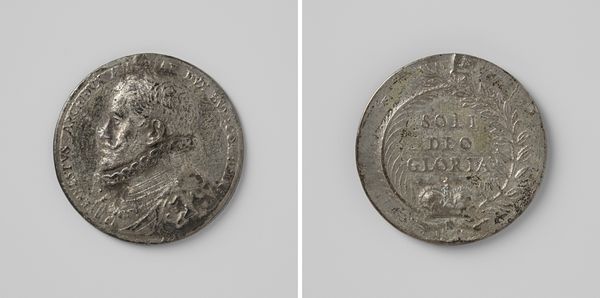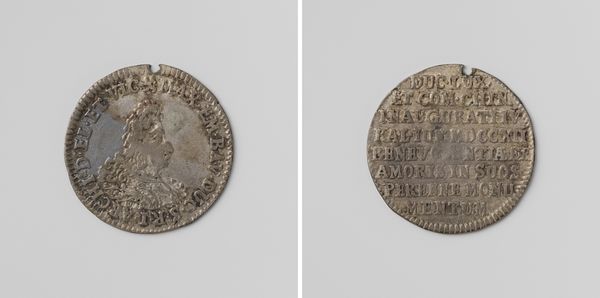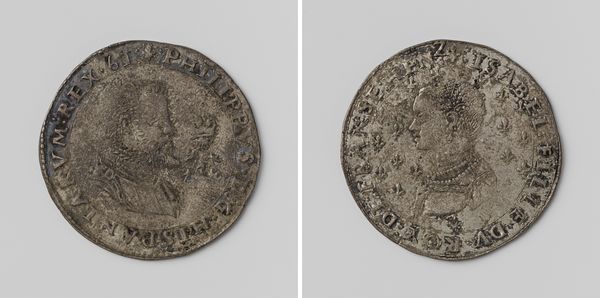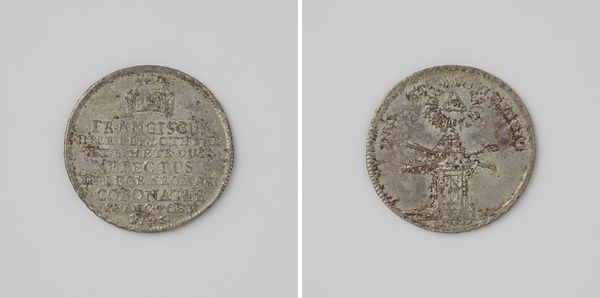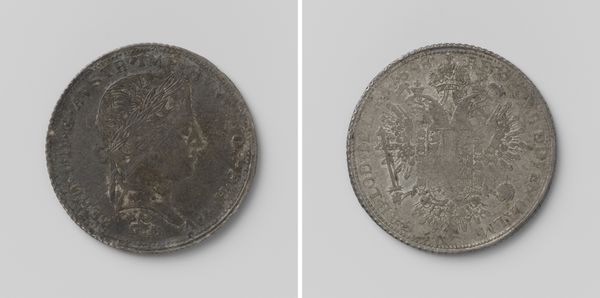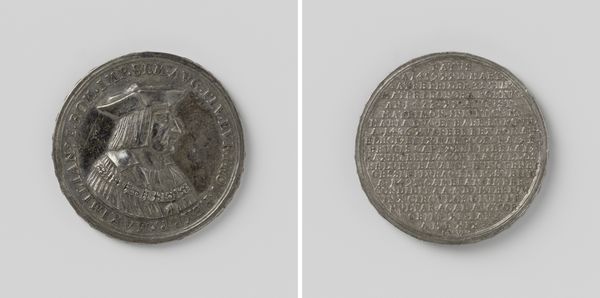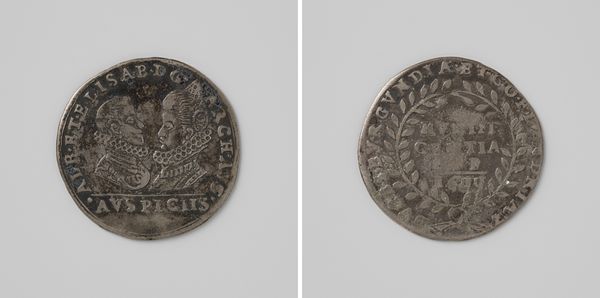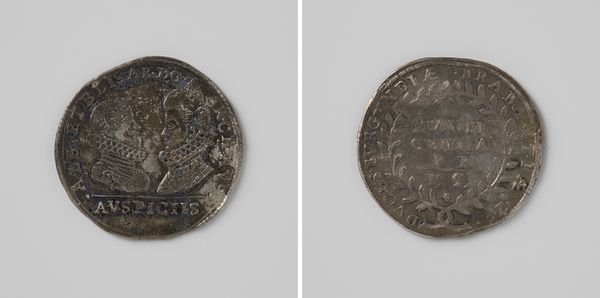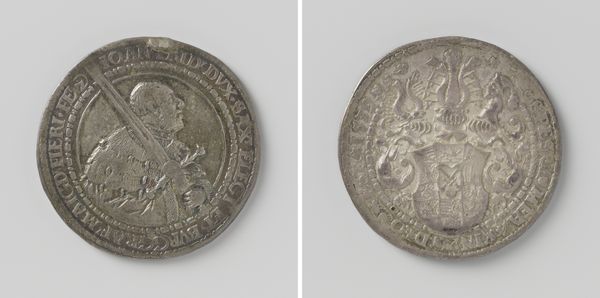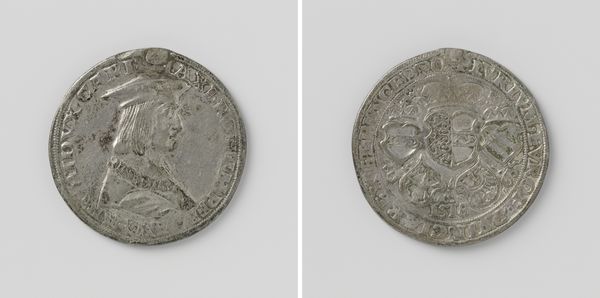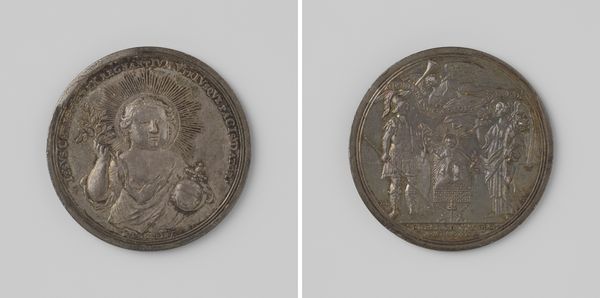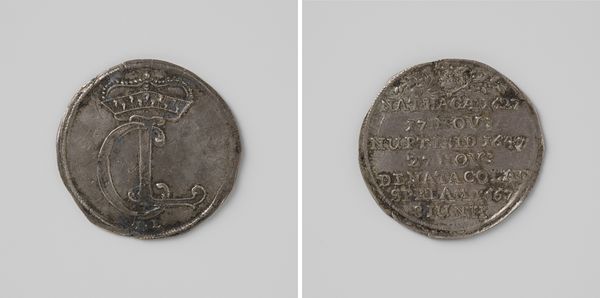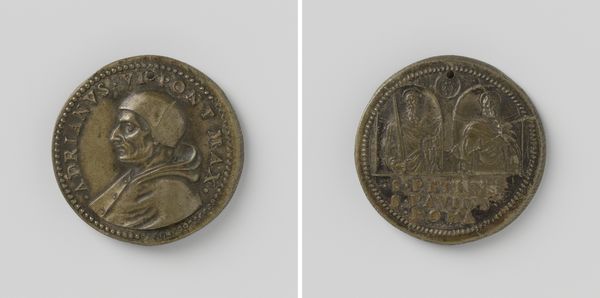
Overwinning bij St. Quentin en inname van die stad, ter ere van Filips II van Spanje Possibly 1557 - 1558
0:00
0:00
metal, sculpture
#
portrait
#
metal
#
sculpture
#
11_renaissance
#
sculpture
#
history-painting
Dimensions: diameter 3.5 cm, weight 14.13 gr
Copyright: Rijks Museum: Open Domain
Curator: Look at this medal. Crafted around 1557-1558 by Jacques Jonghelinck, it commemorates the “Victory at St. Quentin and the capture of the city, in honor of Philip II of Spain.” Its metal surface is a window into a crucial historical moment. Editor: My first thought? It looks almost worn smooth with the passage of time, but there is something regal and stoic. What an interesting artifact of power. Curator: Absolutely. This piece allows us to explore issues of political power in Renaissance Europe, specifically within the context of Spanish rule. The imagery and inscriptions would have functioned as potent propaganda. Jonghelinck presents Philip as a powerful, divinely ordained ruler, connecting victory in battle to his legitimacy. Editor: Right, power told in a picture. But it feels different than just looking at paintings. With this small, touchable, portable monument—the power dynamic becomes super tangible and surprisingly human. I can almost feel what the people would have been subjected to at the time, even holding it now! Curator: And how does considering it in light of colonial exploitation, and the brutal suppression of resistance movements influence our reading? The victory at St. Quentin was strategically vital but this artifact actively celebrates military expansion and, therefore, underscores inherent violence. Editor: Ah, yes, absolutely. It forces us to deal with the realities beneath all the regal portraiture and symbolism—it all suddenly tastes like ash in the mouth. It can open up so much insight when seen with this viewpoint. Curator: Indeed. What it tells us about the past mirrors conversations about authority, dominance, and even our very perspective. And understanding these visual languages is vital to confronting related issues that permeate through the modern period. Editor: Absolutely. Medals like these are way more than old metal. They offer us unique ways of thinking, revealing to us history in an intriguing format.
Comments
No comments
Be the first to comment and join the conversation on the ultimate creative platform.
